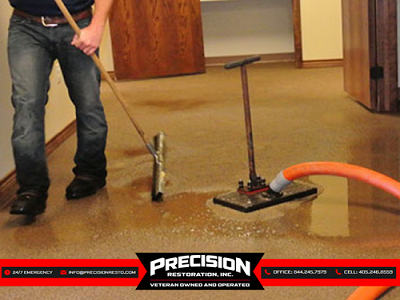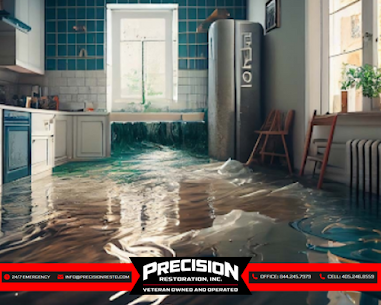When it comes to home disasters, few events are as disruptive as water damage. Whether from a burst pipe, flooding, or a malfunctioning appliance, the aftermath can be devastating. Water mitigation is the first crucial step in recovering from such incidents, and understanding why every minute counts can make a significant difference in the restoration process. Let’s dive deep into the world of water mitigation and explore the importance of swift action.
Understanding Water Mitigation

Water mitigation is a critical process aimed at reducing or preventing the damage caused by water incidents, such as leaks or floods. It begins with a thorough assessment of the affected areas to determine the extent of the damage and identify the source of the water. This initial evaluation is crucial for planning an effective response.
Once the assessment is complete, the next steps involve removing excess water and drying out the impacted spaces. Quick and efficient drying is essential to prevent long-term issues like mold growth and structural damage. Proper water mitigation not only safeguards your property but also ensures a healthier living environment for everyone in the home.
The Science Behind Water Damage
Water damage occurs when water infiltrates materials such as wood, drywall, and insulation in your home. Once these materials absorb moisture, they can weaken, leading to structural issues like warping and sagging. This damage can escalate rapidly, making timely intervention essential.
In addition to physical damage, stagnant water creates an ideal environment for mold and mildew growth. Within just 24 to 48 hours, spores can begin to thrive, posing significant health risks and requiring extensive remediation. The longer water remains, the more extensive the damage becomes, highlighting the importance of swift action in mitigating water-related incidents effectively.
Why Every Minute Counts
Preventing Structural Damage
The immediate concern after a water incident is structural integrity. Water can warp wood, weaken drywall, and cause ceilings to sag. If mitigation isn’t handled quickly, the damage can escalate, leading to costly repairs. For instance, a small leak can evolve into a major structural issue if not addressed promptly.
Mold Growth
Mold thrives in damp conditions. Within 24 hours of water exposure, mold spores can start to grow, potentially leading to significant health risks. Mold can cause respiratory issues, allergic reactions, and other health problems. Quick water removal and drying techniques are essential to prevent mold from becoming a long-term issue.
Health Risks
Beyond mold, standing water can harbor bacteria and other pathogens. This can lead to various health concerns, especially for vulnerable populations like children and the elderly. Quick mitigation helps ensure that the environment remains safe for everyone.
Minimizing Costs
Delaying water mitigation can lead to more extensive damage, which translates to higher repair costs. The sooner you act, the less damage will occur, saving you money in the long run. Many insurance policies may also cover immediate mitigation efforts, reducing your out-of-pocket expenses.
Emotional Toll
Water damage is not just a physical issue; it’s an emotional one, too. The stress and anxiety of dealing with a damaged home can be overwhelming. Quick action can help restore a sense of normalcy, reducing the emotional burden associated with such disasters.
Steps in Water Mitigation
Let’s break down the essential steps involved in effective water mitigation:
Assessment
As soon as water damage is discovered, it’s crucial to assess the extent of the damage. This involves identifying the source of the water, evaluating how much has entered your home, and determining what materials are affected. Quick assessments allow for informed decision-making regarding the next steps.
Water Extraction
Once the assessment is complete, the next step is to remove any standing water. This can involve using pumps, wet vacuums, or specialized water extraction equipment. The sooner this step is performed, the less time the water has to cause further damage.
Drying and Dehumidification
After extracting the water, the drying process begins. Fans, dehumidifiers, and air movers are typically used to circulate air and eliminate moisture from surfaces. Proper drying is crucial to preventing mold growth and ensuring that building materials return to their original state.
Cleaning and Sanitizing
Depending on the source of the water, cleaning and sanitizing may be necessary to eliminate contaminants. This step is vital for ensuring that the environment is safe and free from harmful bacteria.
Restoration
Once everything is dried and cleaned, restoration can begin. This might involve repairing or replacing damaged materials, painting, and restoring your home to its pre-damage condition.
The Importance of Professional Help
While some homeowners might consider tackling water mitigation on their own, the value of professional assistance cannot be overstated. Water damage restoration professionals bring a wealth of expertise and experience, enabling them to accurately assess and address various types of water damage. Their ability to identify hidden issues and implement effective solutions ensures a more thorough and reliable recovery process.

In addition to their skills, professionals are equipped with advanced tools that significantly speed up drying and enhance overall effectiveness. They also have experience navigating the complexities of insurance claims, ensuring homeowners receive the coverage they deserve. Ultimately, relying on experts provides peace of mind, allowing homeowners to focus on other crucial aspects of recovery and reducing stress during an already challenging time.
DIY vs. Professional Mitigation
For small incidents, such as a minor leak, homeowners might feel equipped to handle the situation themselves. Here are some scenarios where DIY might be sufficient:
- Minor leaks: If the source is straightforward and contained, a homeowner may manage the cleanup.
- Small amounts of water: In cases of minimal water exposure, traditional drying methods may suffice.
However, there are clear indicators when to call in the pros:
- Large volumes of water: If the water is more than an inch deep or involves significant flooding, professional extraction is crucial.
- Severe water exposure: If your home has been exposed to contaminated water (from sewage or a burst pipe), immediate professional intervention is necessary.
- Hidden water: If there’s suspicion of water in walls, ceilings, or under flooring, professionals have the tools to detect and mitigate it effectively.
Prevention: The Best Mitigation
While understanding how to react to water damage is crucial, prevention remains the most effective form of mitigation. Homeowners can take several proactive steps to safeguard their properties. Regular inspections are essential; routinely check for leaks in areas like basements, attics, and behind appliances. Early detection can prevent minor issues from escalating into significant damage.
Additionally, installing a sump pump is invaluable for homes in flood-prone areas, as it efficiently removes excess water during heavy rains. Maintaining gutters and downspouts ensures proper water diversion away from the foundation. Knowing your water main shut-off valve is also vital, as it allows for quick action in emergencies. Lastly, consider investing in flood insurance if you live in a high-risk area for added financial protection and peace of mind.
Conclusion
Precision Restoration, Inc. in Oklahoma City knows that every minute counts when dealing with water damage. Prompt action can prevent structural issues, mold growth, and costly repairs. Professional help ensures expertise, advanced equipment, and seamless insurance navigation, giving homeowners peace of mind. Prevention is the best strategy, involving regular inspections, sump pump installations, proper gutter maintenance, and knowledge of your water main shut-off. Investing in flood insurance is also crucial for high-risk areas. Trust Precision Restoration, Inc. to safeguard your home with swift and effective water mitigation strategies. A quick response today ensures a secure tomorrow.



